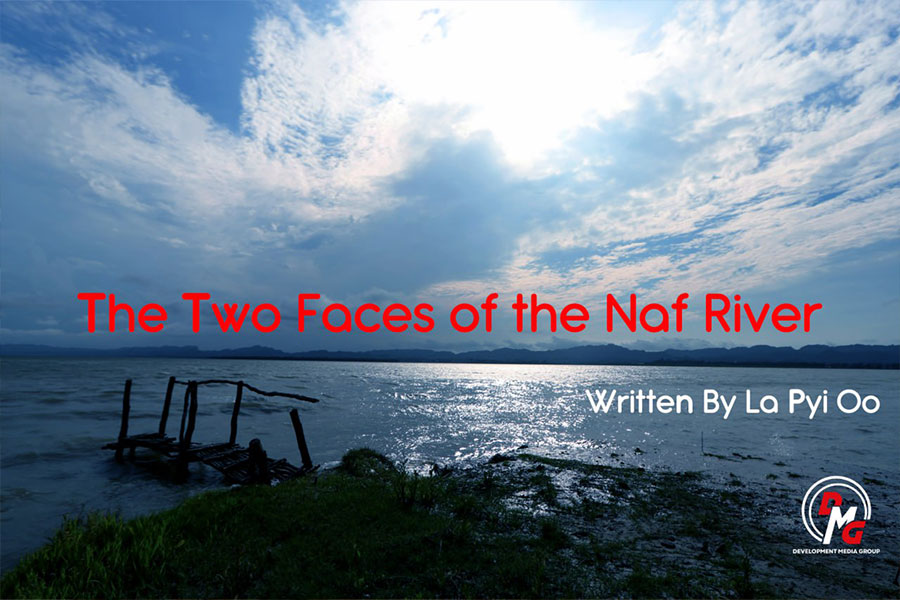- Junta unable to hold elections in dozens of wards and village-tracts in Sittwe, Kyaukphyu
- Fighting escalates between Myanmar military, Arakan Army in Ayeyarwady Region
- Regime steps up civilian arrests in Sittwe
- ULA safeguards Mrauk-U's ancient heritage
- Arakan on the Edge: What the DMG Landmine Impact Report Reveals About Myanmar's Deepening Humanitarian Crisis
Editorial: Arakan State’s Farmers Need Support
The Myanmar Agricultural Development Bank, meanwhile, has not disbursed agricultural loans to farmers who have not repaid their debts from last year. But as of late April, only 7 percent of Arakan State farmers had paid back the agricultural loans that they took out in 2021, according to the state branch of the Myanmar Agricultural Development Bank. This crimping of the agriculture financing spigot is an obvious contributing factor to the exodus of farmers in Arakan State.
09 Jun 2022

The approach of the annual rainy season, now fully in swing, prompts farmers to prepare for the next round of cultivation. This year, however, their numbers are fewer as more and more leave the farm due to various difficulties.
Chief among those challenges is the soaring price of fertiliser. Two years ago, the average price of a bag of fertiliser was about K35,000, but this year it has risen to more than K100,000, leaving farmers in a state of crisis. Farmers in Arakan State are also increasingly abandoning the trade due to labour shortages and skyrocketing input costs beyond just fertiliser.
Arakanese farmers are trying to ameliorate the shortage of manpower with tractors, but now the price for a barrel of diesel has risen to more than K600,000, making it costly to operate those machines. A barrel of diesel sold for around K200,000 two years ago.
But amid the rising cost of agricultural inputs, the price of paddy has not appreciably increased.
Even before the current cost and labour headwinds, farmers were struggling: There are approximately 1.2 million acres of arable farmland in Arakan State, but tens of thousands of acres have gone uncultivated in recent years due to conflict, displacement and the Covid-19 pandemic, in addition to the rising price of agricultural inputs, according to the Arakan Farmers’ Union.
During the monsoon seasons of 2019 and 2020, when fighting between the Arakan Army (AA) and the Myanmar military disrupted normal life for much of Arakan State, agricultural production in the state plummeted, reducing the rice harvest and requiring the importation of rice from mainland Myanmar.
Sown acreage declined by more than 50,000 acres last year in Arakan State due to the aftereffects of two years of conflict and the rising cost of inputs, according to the Arakan Farmers’ Union.
These trends can be reversed, but probably not without policy interventions, and investment.
Although Arakan State is a major source of agricultural and fisheries products, there is still a lack of technology and systematic operations in the agricultural industry. There are numerous international ventures in Arakan State, but little investment in the agricultural sector.
In April, the Arakan State military council distributed 6,000 bags of fertiliser to the agricultural offices of Thandwe, Taungup, Gwa, Mrauk-U and Kyauktaw townships, for those offices to sell at a below-market price. This is the kind of government intervention that our farmers need, but on a scale that is far too small.
The Myanmar Agricultural Development Bank, meanwhile, has not disbursed agricultural loans to farmers who have not repaid their debts from last year. But as of late April, only 7 percent of Arakan State farmers had paid back the agricultural loans that they took out in 2021, according to the state branch of the Myanmar Agricultural Development Bank. This crimping of the agriculture financing spigot is an obvious contributing factor to the exodus of farmers in Arakan State.
Due to political instability, it is not possible at present to maximise cultivation of arable land in mainland Myanmar. Rice shortages are thus likely to be a problem not only in Arakan State but also in Myanmar as a whole, as the same high agricultural costs are combined with disruptions related to the coup and its aftermath. If fighting resumes in Arakan State — as looks increasingly possible amid rising military tensions in recent weeks — the situation could get even worse.
There is a role for the government to play when such conditions prevail. Policies that are helpful (such as the currently limited fertiliser subsidy) must be emphasised, and punitive measures (such as the withholding of loan disbursements for those in default) must be scrutinised for the harm that they cause to individual farmers and the collective agricultural sector.
Farming makes up a disproportionate share of Myanmar’s GDP and employs more people than any other sector of the economy. This is true for Arakan State, too. Now is no time to turn our backs on the backbone of the economy.




















